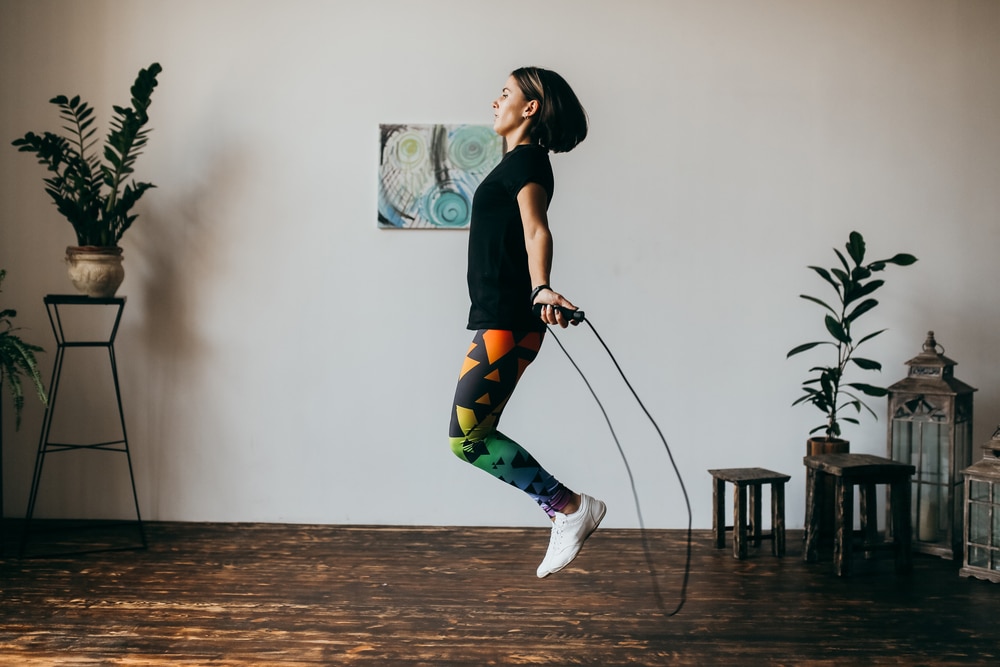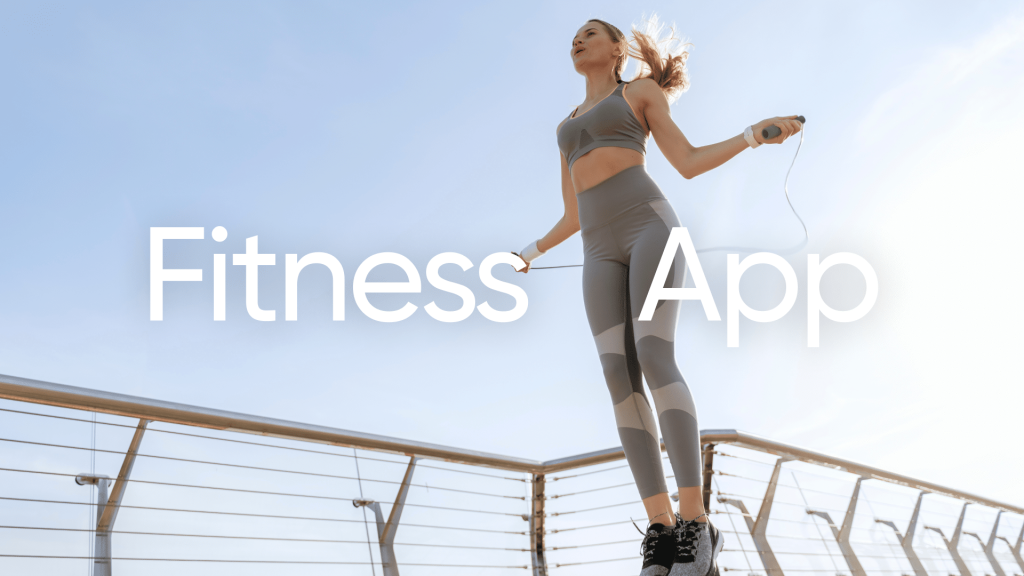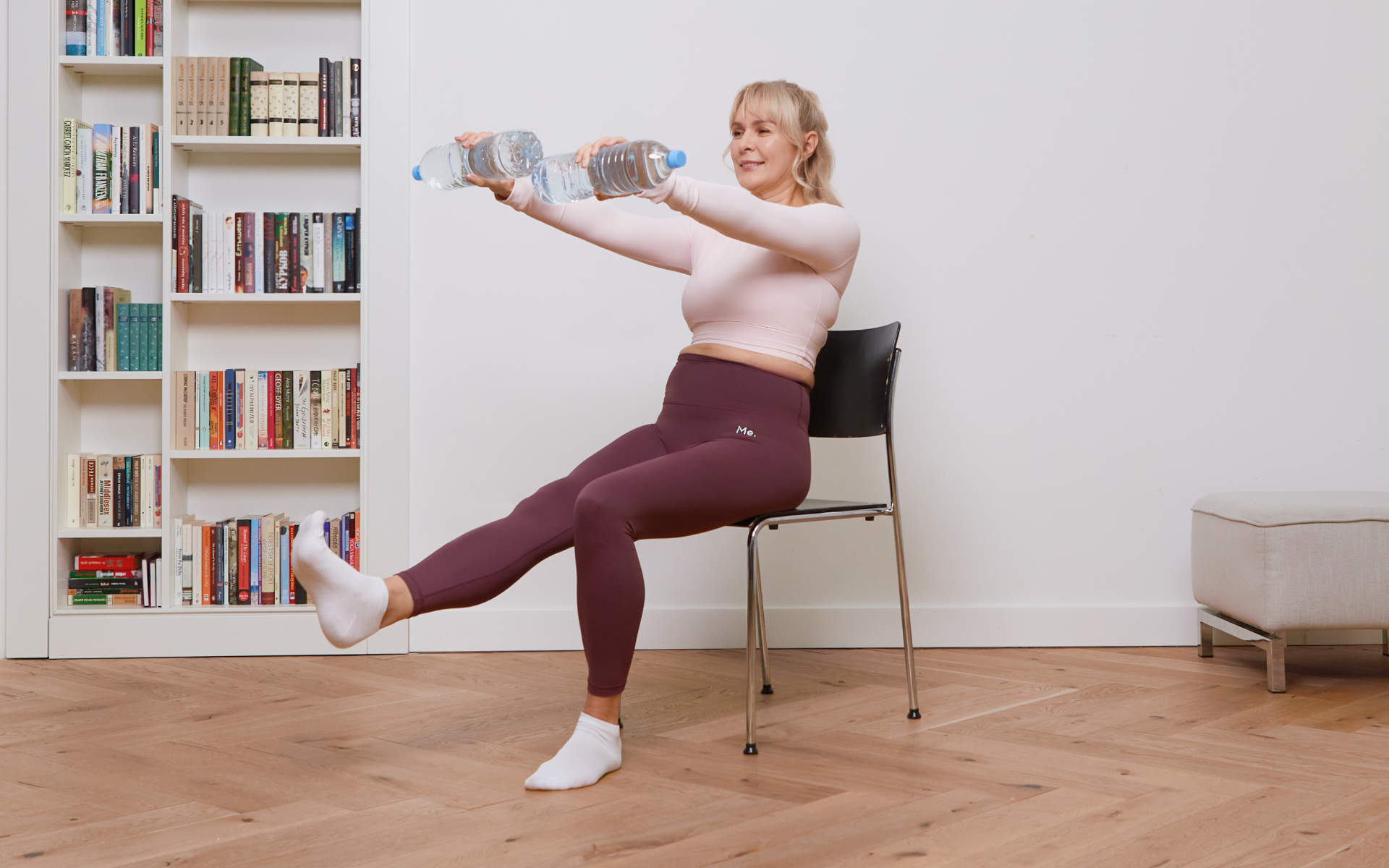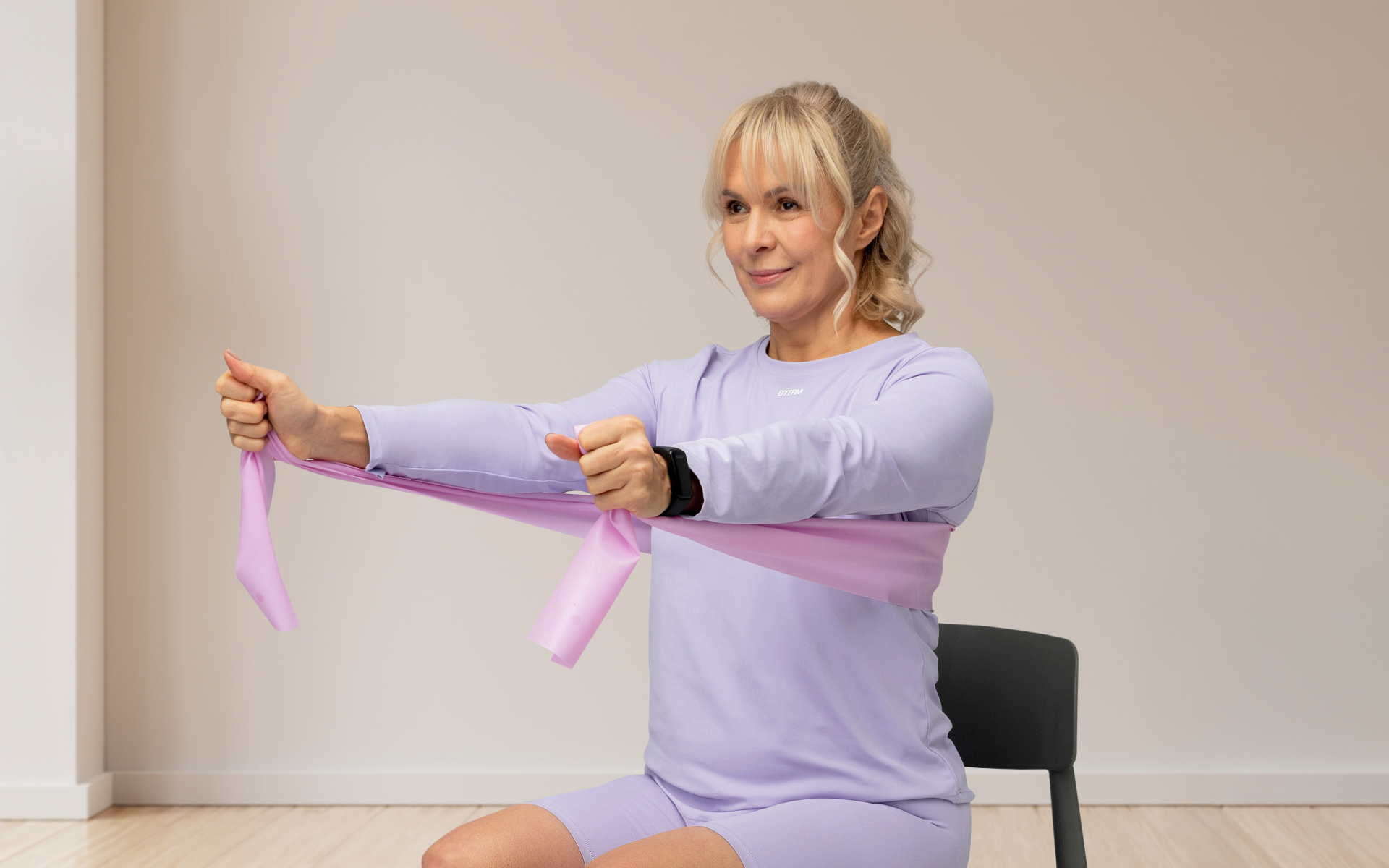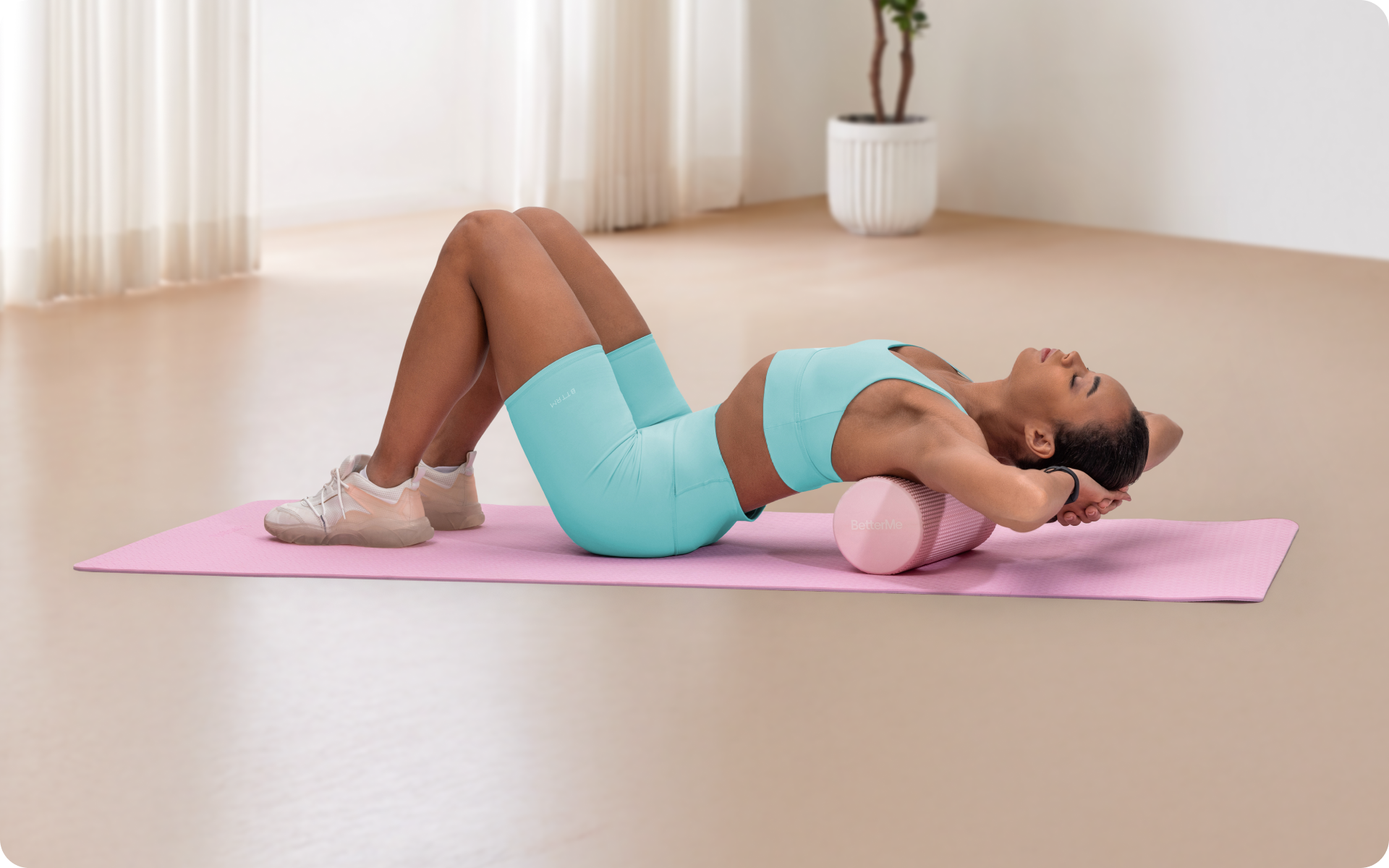Are you looking for an effective and fun way to get in shape? If so, then jump rope workouts might be just what you need! Jumping rope is a great form of exercise which can help you strengthen your muscles, improve your coordination, and burn calories. Plus, it’s incredibly easy to do—all you need is a good pair of shoes and a jump rope. In this guide, we’ll talk about the benefits of jumping rope as well as how to safely perform various exercises. We’ll also provide some tips on how to make the most out of your next workout. If you’re ready to take your fitness routine up a notch with some high-intensity cardio training, grab yourself a jump rope and read on!
What Muscle Groups Does Jump Rope Workout?
Jump rope workouts are an effective way to target multiple muscle groups at once. These include:
- Calves: Jumping rope is a great way to strengthen your calves and help with balance.
- Thighs: As you jump, your thighs engage to provide the power for each jump.
- Core: Every time you make a turn of the rope, you are engaging your core muscles in order to maintain balance and control the rope’s speed.
- Shoulders and arms: The handles of the rope are connected by an elastic cord that provides resistance when turning the rope; this strengthens both your shoulders and arms.
- Glutes: Your glutes will fire as you lift off during each jump, helping to tone and shape them.
- Back: Keeping your back straight helps to strengthen your entire back.
- Heart: Jumping rope is a great way to get your heart pumping and build cardiovascular endurance.
Jump rope workouts are an effective way to target multiple muscle groups in a short amount of time. With regular practice, you can quickly increase strength, power, and endurance all while burning calories and toning muscle!
Read More: Rev Up Your Calorie Burn With HIIT Jump Rope Workouts: Benefits & Routines
What Else Does Jump Rope Workout Do?
Below, we will take an in-depth look at the various benefits of a jump rope workout.
Torches Calories Like Crazy
Jumping rope is one of the most efficient ways to burn calories.
For example, a 200-pound person can burn an average of about 181 calories from a 10-minute jump rope workout (1). This makes it one of the most effective exercises for burning fat and maintaining a healthy weight.
Throw in some interval training and you can easily get your heart rate up to an aerobic level, which helps to strengthen your cardiovascular system (12).
Provides A Full-Body Workout
Using a jump rope provides a full-body workout that strengthens muscles in the legs, arms, and core. As you are jumping, your leg muscles are working hard to propel you up and down while at the same time, your arms must work to keep the rope turning regularly.
Your core also works continuously to provide stability throughout the motion of jumping. This means that you’re getting an amazing total body workout in no time!
Improves Balance
Balance is essential for any type of physical activity.
Jumping rope forces you to coordinate your arms, legs, and core together, making it a great way to improve balance and coordination. This increased balance helps with other activities such as running and sports that require quick bursts of energy and agility (7).
Improves Coordination
Jumping rope helps to hone your coordination by improving the timing between your legs and arms (13). This coordination carries over into other activities you may do such as running, playing sports, or even daily activities like walking up and down stairs.
Strengthens Ankles And Feet
Jumping rope strengthens the ankles and feet, which is important for injury prevention (2).
Strong ankles are key to being able to perform activities like running, sports, and daily exercise with little risk of sprains or strains. Additionally, strong feet help keep your posture in check as well as prevent foot pain over the long run.
Intense sweat sessions, working weight loss tips, lip-smacking recipes come in one package with the BetterMe app. And all of it is at your fingertips, start transforming your life now!
Boosts Your Metabolism
One of the best ways to boost your metabolism is to incorporate a jump rope routine into your workout regimen. By increasing muscle mass, jumping rope can help speed up your metabolic rate which will lead to burning more calories even when you’re not exercising (10).
Increases Cardiovascular Endurance
Jump rope exercises are an amazing way to improve cardiovascular endurance and stamina. When done regularly, it can increase oxygen intake and lung capacity (9) (12).
With each jump, your heart rate increases and helps to challenge your system which leads to increased cardiovascular endurance (8).
Increases Mental Focus & Clarity
Jumping rope is not only good for the body but it also has great benefits for the mind. By concentrating on the rhythm of your jumps, you can focus and clear your head of any mental clutter or worries. This can help improve concentration and mental clarity (5).
Furthermore, jumping rope is a great way to reduce stress and anxiety as it releases endorphins that make you feel happier and more relaxed (11).
Improves Bone Density
Bone density refers to the amount of calcium and other minerals in your bones. As we age, our bones naturally start to become weaker and more prone to fractures (3).
Jumping rope is a great way to help prevent this natural decrease in bone density since it puts pressure on the bones when you land which helps stimulate new cell growth in the bones (4) (6). This helps to make them stronger over time.
No Equipment Needed
One of the best parts about jump rope exercises is that you don’t need any special equipment—all you need is a good pair of shoes and a jump rope.
This makes it great for people on the go who are looking for an effective workout without having to invest in bulky gym equipment or costly memberships.
Read More: Is Jumping Rope Good Cardio? Pros, Cons, And Tips To Make The Most Out Of Your Workout
How To Do Jump Rope Exercise?
Here’s a detailed, step-by-step guide on how to do a jump rope exercise:
- Start by getting your equipment ready – you’ll need a good quality jump rope, comfortable clothing, and supportive shoes. Make sure the rope is the right length for you – it should reach the ground when stepping on one end of it while standing with both feet together.
- Make sure you warm up before beginning any exercises. Jumping rope can be very intense and puts a lot of strain on your joints, so take some time to stretch out or perform a light jog around your neighborhood or house before jumping in. This will help get your heart rate up and prepare your body for the workout ahead.
- Once everything is set up and your body is warm, start with a basic jump rope technique. To do this, stand up straight with both feet together and hold the handles of the rope in each hand. Swing the rope forward over your head and follow through under your feet as you jump.
- After mastering the basic technique, it’s time to mix things up! Try adding high knees, double unders or even jumping jacks into your routine to make things more challenging. You can also alternate between these techniques if you want an extra intense workout!
- Finally, end every session with some cool-down exercises like stretching or yoga poses. This will help reduce muscle soreness post-exercise and keep you feeling relaxed afterwards.
Jump Rope Mistakes To Avoid
Many don’t realize that there is a wrong way to jump rope. To minimize injuries and get the most out of your jump rope sessions, here are a few things to keep in mind:
How High You Jump
This is probably the most important factor in jumping rope. Too little and you won’t get any benefit out of your exercise. On the other hand, jumping too high can put a strain on your joints and lead to injury. The ideal height should be around an inch off the ground.
Using The Wrong Rope Length
When selecting a rope, it’s important to choose one that is appropriate for your height. If it’s too short, it will be difficult to use properly, and if it’s too long, you may trip over it or injure yourself. Make sure to measure the rope against your body before buying!
Your Arms
When jumping rope, your arms should remain at a 90-degree angle and you should use your wrists to move the rope. If your arms are too wide out, you won’t be able to move the rope as quickly or effectively. You might also feel some strain as you jump.
Landing On Your Heels
When you jump, it’s important to land on the balls of your feet. Landing on your heels can cause strain and discomfort in your legs and back. Make sure you’re landing lightly and with bent knees so that there isn’t too much impact when you hit the ground.
Whether you’re looking to simply pep up your fitness routine, jazz up your diet with mouth-watering low-calorie recipes or want to get your act together and significantly drop that number on your scale – BetterMe app has got you covered! Improve your body and revamp your life with us!
Being Too Hard On Yourself
Jumping rope is a great form of exercise that requires practice in order to perfect it. Don’t get frustrated if you find yourself having trouble at first – just keep practicing! The more you do it, the better you will become over time.
Furthermore, consistency is more important than intensity especially when you’re starting out. Start slow, master the basics, and then increase your speed and intensity as you become more advanced.
Jump Rope FAQs
Q: What Are The Benefits Of Jumping Rope?
A: Jumping rope offers numerous physical and mental benefits. Physical benefits include improved coordination and balance, increased cardiovascular endurance, enhanced muscular power and strength, improved joint mobility, and calorie burning.
In addition to physical health benefits, jumping rope can also have a positive impact on mental health, including improved focus and concentration, increased confidence and discipline, reduced levels of stress, and the satisfaction of achieving goals.
Q: Does Jump Rope Work Core Muscles?
A: Yes, jumping rope is an effective workout for strengthening the core muscles. During a jump rope session, your abdominal and back muscles are constantly engaged in order to stabilize the body and maintain balance.
Jumping rope helps to develop strength and tone in these muscles, as well as improve posture and balance.
Q: What Group Does Jump Rope Workout?
A: Jumping rope works all of the major muscle groups in the body, including the legs, hips, arms, shoulders, and core. It’s a full-body workout that also has the added benefit of cardiovascular conditioning.
Q: How Many Calories Does Jump Rope Burn?
A: Jumping rope is an excellent way to burn calories. The amount of calories burned depends on the intensity of the workout and your body weight.
Q: What Kind Of Jump Rope Should I Use?
A: The type of jump rope you choose depends on your individual needs and preferences. Generally, a speed rope with lightweight handles is best for beginners. For more advanced jumpers, weighted ropes or ones with adjustable lengths can offer more of a challenge.
Q: How Often Should I Jump Rope?
A: Generally, you should aim for three to five days a week of jump rope workouts. Beginners may want to start out with just one or two days a week and gradually increase the frequency as they become more comfortable with the exercise. Also, make sure to give yourself a rest day in between workouts to allow your muscles to recover.
Q: What Should I Wear When Jumping Rope?
A: Comfort is key when it comes to exercise, so make sure to wear clothing that won’t restrict your movement, such as lightweight athletic shorts or leggings and a t-shirt. It’s also important to choose supportive shoes that will provide cushioning and stability during your workout.
Q: How Can I Improve My Jump Rope Skills?
A: Practice makes perfect! Start by mastering the basics such as basic jumps, double under, and crossovers. Once you have the basics down, you can work on adding in more complex moves such as skipping over obstacles or alternating your feet while jumping.
The Bottom Line
Jump rope works out your entire body, is easy to do anywhere, and can be modified for all fitness levels. It’s also a great way to get your heart pumping, burn some calories, and improve coordination and balance.
DISCLAIMER:
This article is intended for general informational purposes only and does not serve to address individual circumstances. It is not a substitute for professional advice or help and should not be relied on for making any kind of decision-making. Any action taken as a direct or indirect result of the information in this article is entirely at your own risk and is your sole responsibility.
BetterMe, its content staff, and its medical advisors accept no responsibility for inaccuracies, errors, misstatements, inconsistencies, or omissions and specifically disclaim any liability, loss or risk, personal, professional or otherwise, which may be incurred as a consequence, directly or indirectly, of the use and/or application of any content.
You should always seek the advice of your physician or other qualified health provider with any questions you may have regarding a medical condition or your specific situation. Never disregard professional medical advice or delay seeking it because of BetterMe content. If you suspect or think you may have a medical emergency, call your doctor.
SOURCES:
- ACE Fit: Physical Activity Calorie Counter (n.d., acefitness.org)
- Benefits of jumping rope during injury rehabilitation (n.d., humankinetics.com)
- Bone Mineral Density: Clinical Relevance and Quantitative Assessment (2021, ncbi.nlm.nih.gov)
- Efficiency of jumping exercise in improving bone mineral density among premenopausal women: a meta-analysis (2014, pubmed.ncbi.nlm.nih.gov)
- Impact of Long-Rope Jumping on Monoamine and Attention in Young Adults (2021, mdpi.com)
- Jumping rope and whole-body vibration program effects on bone values in Olympic artistic swimmers (2021, pubmed.ncbi.nlm.nih.gov)
- Jump Rope Training: Balance and Motor Coordination in Preadolescent Soccer Players (2015, ncbi.nlm.nih.gov)
- Metabolic cost of rope training (2015, pubmed.ncbi.nlm.nih.gov)
- Principal components analysis to characterise fatigue-related changes in technique: Application to double under jump rope (2017, pubmed.ncbi.nlm.nih.gov)
- Skeletal muscle metabolism is a major determinant of resting energy expenditure (1990, pubmed.ncbi.nlm.nih.gov)
- The Effects and Mechanisms of Exercise on the Treatment of Depression (2021, frontiersin.org)
- The effects of dance music jump rope exercise on pulmonary function and body mass index after music jump rope exercise in overweight adults in 20’s (2017, ncbi.nlm.nih.gov)
- The effects of rope or weighted rope jump training on strength, coordination and proprioception in adolescent female volleyball players (2011, pubmed.ncbi.nlm.nih.gov)
